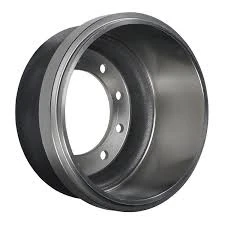
-
 Afrikaans
Afrikaans -
 Albanian
Albanian -
 Amharic
Amharic -
 Arabic
Arabic -
 Armenian
Armenian -
 Azerbaijani
Azerbaijani -
 Basque
Basque -
 Belarusian
Belarusian -
 Bengali
Bengali -
 Bosnian
Bosnian -
 Bulgarian
Bulgarian -
 Catalan
Catalan -
 Cebuano
Cebuano -
 Corsican
Corsican -
 Croatian
Croatian -
 Czech
Czech -
 Danish
Danish -
 Dutch
Dutch -
 English
English -
 Esperanto
Esperanto -
 Estonian
Estonian -
 Finnish
Finnish -
 French
French -
 Frisian
Frisian -
 Galician
Galician -
 Georgian
Georgian -
 German
German -
 Greek
Greek -
 Gujarati
Gujarati -
 Haitian Creole
Haitian Creole -
 hausa
hausa -
 hawaiian
hawaiian -
 Hebrew
Hebrew -
 Hindi
Hindi -
 Miao
Miao -
 Hungarian
Hungarian -
 Icelandic
Icelandic -
 igbo
igbo -
 Indonesian
Indonesian -
 irish
irish -
 Italian
Italian -
 Japanese
Japanese -
 Javanese
Javanese -
 Kannada
Kannada -
 kazakh
kazakh -
 Khmer
Khmer -
 Rwandese
Rwandese -
 Korean
Korean -
 Kurdish
Kurdish -
 Kyrgyz
Kyrgyz -
 Lao
Lao -
 Latin
Latin -
 Latvian
Latvian -
 Lithuanian
Lithuanian -
 Luxembourgish
Luxembourgish -
 Macedonian
Macedonian -
 Malgashi
Malgashi -
 Malay
Malay -
 Malayalam
Malayalam -
 Maltese
Maltese -
 Maori
Maori -
 Marathi
Marathi -
 Mongolian
Mongolian -
 Myanmar
Myanmar -
 Nepali
Nepali -
 Norwegian
Norwegian -
 Norwegian
Norwegian -
 Occitan
Occitan -
 Pashto
Pashto -
 Persian
Persian -
 Polish
Polish -
 Portuguese
Portuguese -
 Punjabi
Punjabi -
 Romanian
Romanian -
 Russian
Russian -
 Samoan
Samoan -
 Scottish Gaelic
Scottish Gaelic -
 Serbian
Serbian -
 Sesotho
Sesotho -
 Shona
Shona -
 Sindhi
Sindhi -
 Sinhala
Sinhala -
 Slovak
Slovak -
 Slovenian
Slovenian -
 Somali
Somali -
 Spanish
Spanish -
 Sundanese
Sundanese -
 Swahili
Swahili -
 Swedish
Swedish -
 Tagalog
Tagalog -
 Tajik
Tajik -
 Tamil
Tamil -
 Tatar
Tatar -
 Telugu
Telugu -
 Thai
Thai -
 Turkish
Turkish -
 Turkmen
Turkmen -
 Ukrainian
Ukrainian -
 Urdu
Urdu -
 Uighur
Uighur -
 Uzbek
Uzbek -
 Vietnamese
Vietnamese -
 Welsh
Welsh -
 Bantu
Bantu -
 Yiddish
Yiddish -
 Yoruba
Yoruba -
 Zulu
Zulu
hydro e brake with drums
The Hydro E-Brake with Drums Enhanced Performance and Safety
In the world of automotive performance, the braking system plays a pivotal role in ensuring safety and control. Among the many innovations in braking technology, the hydro e-brake with drums has emerged as a notable advancement. This system integrates hydraulic technology into traditional drum brakes, providing enhanced performance, greater control, and improved safety for drivers of all levels, from casual users to competitive racers.
Understanding the Hydro E-Brake System
The hydro e-brake system combines hydraulic actuators, which can deliver more precise and powerful braking force than mechanical systems, with traditional drum brakes. Drum brakes have been a reliable option in the automotive industry for decades, known for their simplicity and effectiveness in certain applications. However, they typically suffer from a few limitations, such as heat dissipation and responsiveness. The introduction of a hydraulic mechanism addresses these issues, enhancing performance significantly.
In a conventional drum brake system, friction is generated between the brake shoes and the drum itself, creating the necessary stopping power. However, this process can lead to brake fade—an effect where the braking efficiency diminishes due to overheating. The hydro e-brake system utilizes hydraulic pressure, allowing for quicker engagement and more even distribution of force across the brake pads, thus reducing heat buildup and improving overall braking efficiency.
Advantages of the Hydro E-Brake with Drums
1. Precision Control One of the most significant advantages of a hydro e-brake is the precision it offers. By using hydraulic pressure, drivers can modulate their braking force more effectively. This is particularly beneficial in drift racing and off-road applications, where precise control over braking can enhance performance and maneuverability.
hydro e brake with drums

2. Reduced Weight Traditional brake systems often utilize heavy components that can add unwanted weight to a vehicle. Hydro e-brakes, in contrast, can be designed with lightweight materials and optimized geometry, contributing to a better power-to-weight ratio. This reduction in weight not only improves acceleration but also enhances handling dynamics.
3. Improved Durability The wear-and-tear associated with mechanical systems can lead to increased maintenance costs and potential failures. The hydraulic components of the hydro e-brake are designed for longevity, often requiring less frequent servicing compared to conventional drum brakes. This makes them a more economical option over the long term, especially for those who frequently engage in high-performance driving.
4. Consistency Under Load The hydro e-brake system maintains consistent braking performance under varying loads, making it ideal for both street and track use. The system is less susceptible to changes in performance due to hot spots or uneven wear, providing a reliable braking experience regardless of driving conditions.
5. Enhanced Safety Safety is paramount in any automotive application, and the hydro e-brake system boosts safety by offering increased stopping power. The hydraulic mechanism provides a more responsive brake feel, which can be crucial in emergency situations where every fraction of a second matters.
Conclusion
Incorporating a hydro e-brake with drums into a vehicle can significantly enhance its braking performance, control, and safety. This innovative system represents a fusion of traditional and modern technologies, addressing the limitations often associated with conventional braking systems. Whether you're a daily driver, an enthusiast, or a competitive racer, the addition of a hydro e-brake can elevate your driving experience. As automotive technology continues to evolve, innovations like the hydro e-brake remind us of the importance of safety and performance in our vehicles. The future of braking technology looks promising, and the hydro e-brake system is undoubtedly a significant step toward better and safer driving experiences.
-
What Are Drum BrakesNewsJul.07,2025
-
Understanding Brake Drum MaterialNewsJul.07,2025
-
Semi-Trailer Brake Drum: A Key Component for Extreme Loads and Long-Distance TransportNewsJul.07,2025
-
Drum Brake Pads for SaleNewsJul.07,2025
-
Brake Drums for SaleNewsJul.07,2025
-
Brake Drum ManufacturerNewsJul.07,2025
-
Aluminum Brake Drums: The Future of High-Performance CarsNewsJul.07,2025
